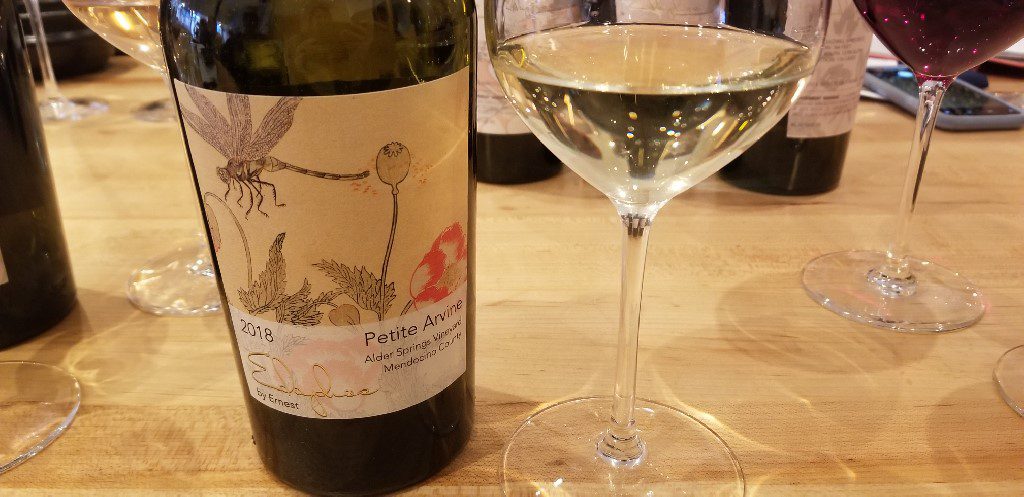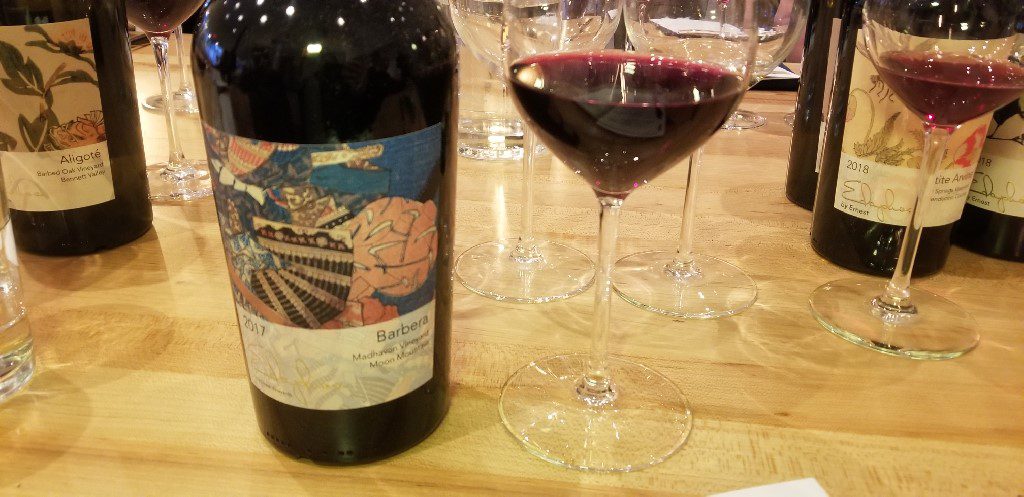
17 Mar Edaphos Wines: A new Sonoma producer
I always love trying new wines and when I was invited to taste the wines of Edaphos Wines from Sonoma I was excited. But I honestly did not expect to be so impressed with the wines. I fell in love with the unique varieties produced by Edaphos and wrote about it in the Napa Valley Register which you can read here.
***************************
There are more than 425 wineries in Sonoma County. I know that I have not tasted wines from probably half of them. So, when I was invited to try a new Sonoma brand, I was happy to try it.
I had some high expectations for the wines as the friend who invited me to taste them is San Francisco-based sommelier-turned-educator Eugenio Jardim, whose palate I respect and trust.
While I anticipated the wines to be good expressions of Pinot Noir and Chardonnay, I was in for great surprise. Edaphos (ee-dah-fos) Wines are exploring the bounty of Sonoma beyond Pinot Noir and Chardonnay and producing excellent wines that were nothing like what I expected.
Edaphos Wines has been a quiet sibling to Ernest Vineyards in Sonoma County since 2014. Ernest Vineyards is a producer of Coastal Chardonnay and Pinot Noir. Founded by Todd Gottula and Erin Brooks in 2012, Ernest Vineyards produces site-specific Chardonnay and Pinot Noir from single vineyard sites in Sonoma. But that is not what Edaphos Wines produces.
Beginning in 2014, Todd and Erin created Edaphos (which means “base,” “ground,” and “soil” in Greek) as a sort of laboratory to explore the beauty of Sonoma. Edaphos Wines is unconventional for California.
Sonoma provides a playground where unexpected grape varieties are selected instead of the dominant grapes of the region. And inside the winery, the approach to winemaking is one of exploration and experimentation. With the goal of adding little to nothing in the cellar, the focus is on different winemaking techniques such as different fermentation movements and the use of amphora and concrete eggs.
In 2017, Edaphos Wines became a serious brand and in 2018 winemaker Joseph Ryan joined the team. In addition to exploring the various microclimates and varieties in Sonoma, as well as experimenting with different winemaking techniques, Edaphos Wines launched with new packaging. The wine bottle is a unique bottle shape sometimes used in Italy that is shorter and fatter than a typical wine bottle. And the labels are beautiful textile pieces from the Edo period in Japan.
Edaphos is currently producing four wines with grape varieties that one does not likely expect from Sonoma.
Aligoté – Edaphos Wines 2017 Aligoté, Barbed Oak Vineyard, Bennett Valley, Sonoma ($36)
Originally from France, Aligoté is considered the “third” grape of Burgundy and is also found planted in Eastern Europe. It is a grape known for its acidity and is tolerant to cold weather. Edaphos Wines sources their Aligoté from the Barbed Oak Vineyard in Bennett Valley in Sonoma County. Less than one acre of Aligoté is planted on this 18-acre property and it can be found in the coldest part of the vineyard. The grapes are crushed into press, fermented by native yeasts in concrete amphora and moved to neutral barrel for malolactic fermentation. The wine spends 17 months on the lees and is not filtered before bottling. Floral, citrus and stone fruit aromas jump out of the glass. The wine also has a lot of minerality. On the palate, thanks to the time on the lees, the wine has a lot of texture and a chalky finish.
Petite Arvine—Edaphos Wines 2018 Petite Arvine, Alder Springs Vineyard, Mendocino County ($42)
Petite Arvine is a white wine grape planted in the Valais region of Switzerland, as well as Valle d’Aosta in Italy. The grape has been cultivated in Valais for at least 500 years but there are only small amounts of it planted in Switzerland and it is not commonly exported. Edaphos found a small planting of Petit Arvine sitting at 1,900 feet elevation in Alder Spring Vineyard located in the northern part of Mendocino County, only 12 miles from the Mendocino Coast. The grapes are direct pressed into neutral wood and stainless steel for a slow and cool primary fermentation over 10 months before filtering and bottling. The wine is a super aromatic wine with floral, peach and chalky notes that continue through onto the palate. The wine has a lovely weight on the mid-palate that extends across the palate for a mouthwatering finish.
Grenache—Edaphos Wines 2018 Grenache, Steel Plow Vineyard, Sonoma County ($38)
Grenache has lately become a darling in Sonoma as more and more producers choose to work with the grape. Edaphos sources their Grenache from the Steel Plow Vineyard, the estate vineyard of Landmark Vineyards. The wine goes through partial carbonic maceration and spends almost a month on the skins before being lightly pressed in a basket press and then fermented in concrete Amphora and aged for 10 months. The wine is filtered but no sulfur is added. Another very aromatic wine, this wine offers a potpourri of violets, lavender, wild strawberry and plum, as well as earthy spices and mineral notes. On the palate, the wine is medium-bodied with sandy tannins.
Barbera – Edaphos Wines 2017 Barbera, Madhavan Vineyard, Sonoma County ($28)
Typically grown in Piemonte, Italy, Barbera is one of the most significant Italian grapes. Although it has been planted in California for many years, it is not a prevalent grape grown in Sonoma. Edaphos sources their Barbera from a vineyard on Mood Mountain where the vines are head trained. The juice is fermented and aged in a concrete egg. The finished wine has notes of red and black fruits and brown spices. Although the wine is young, its aromas are more mature. The wine is medium bodied with drying tannins that linger on the front of the palate.
With a Greek name, an Italian bottle, Japanese art on the label and unexpected grape varieties, Edaphos Wines is unconventional for California. But these are outstanding examples of what Sonoma has to offer.
Read the original story in the Napa Valley Register.
Discover more from Please The Palate
Subscribe to get the latest posts sent to your email.








